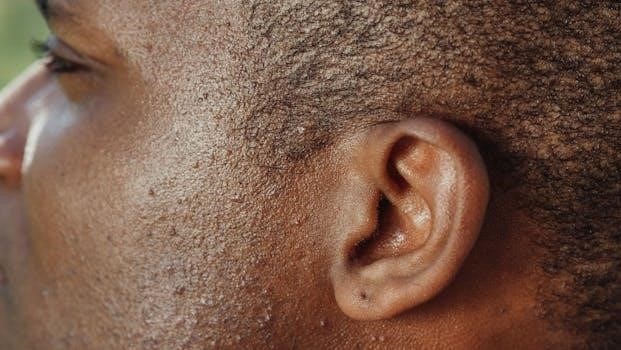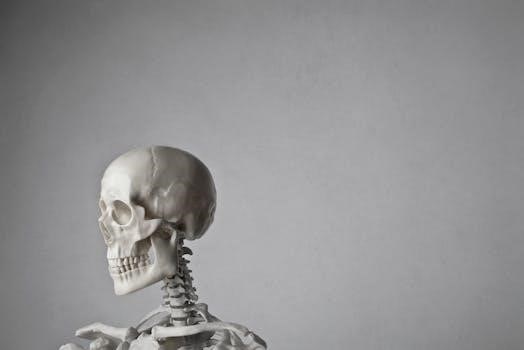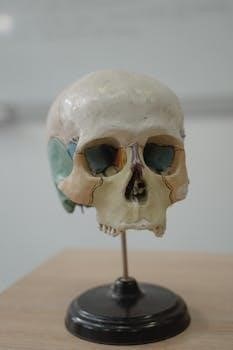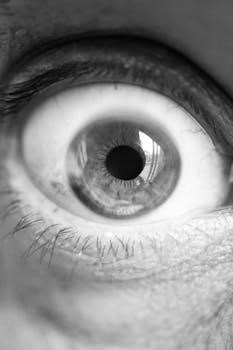Anatomy and Physiology Study Guide

Embark on an engaging journey through the fascinating world of the human body with this comprehensive study guide! This guide is crafted to help students master the complexities of anatomy, the study of body structures, and physiology, the study of how those parts function.
Welcome to the captivating realm of anatomy and physiology, two fundamental disciplines that unlock the secrets of the human body. Anatomy explores the intricate structures, from the smallest cells to the largest organs, revealing their organization and relationships. Physiology delves into the dynamic functions of these structures, investigating how they work individually and in concert to maintain life.

These fields are inextricably linked; structure dictates function, and function shapes structure. Understanding anatomy provides the framework for comprehending physiological processes, while knowledge of physiology illuminates the purpose and significance of anatomical features.
This study guide will serve as your roadmap through the core concepts of anatomy and physiology, providing a solid foundation for further exploration in the health sciences. Whether you are a nursing student, a healthcare professional, or simply curious about the human body, this guide will equip you with the knowledge and tools to succeed.
Prepare to embark on an exciting intellectual adventure as we unravel the mysteries of the human form and its remarkable functions!
Definitions⁚ Anatomy and Physiology
To embark on our journey through the human body, it’s crucial to establish clear definitions of our key terms⁚ anatomy and physiology. These disciplines, while intertwined, represent distinct approaches to understanding the human form and its functions.
Anatomy, derived from the Greek word “anatomē” meaning “to dissect,” is the study of the structure of body parts and their relationships to one another. It’s a descriptive science, focusing on identifying and naming the various components of the body, from macroscopic structures visible to the naked eye to microscopic details revealed through histology.
Physiology, on the other hand, explores the function of these body parts. It investigates how these structures work, both individually and collectively, to carry out life processes. Physiology delves into the chemical and physical mechanisms that underlie these functions, seeking to explain how the body maintains homeostasis and responds to its environment.
In essence, anatomy provides the blueprint, while physiology describes how that blueprint is utilized to create a living, breathing organism. Mastering these definitions is the first step toward unlocking the secrets of the human body.
The Relationship Between Anatomy and Physiology
Anatomy and physiology are inextricably linked; understanding one is essential for comprehending the other. The relationship between structure and function is a cornerstone of biological study. Anatomy reveals the ‘what’ – the components of the body, while physiology explains the ‘how’ – how those components operate.
Consider the heart. Anatomically, it’s a muscular organ with chambers, valves, and associated blood vessels. This structure directly dictates its physiological function⁚ pumping blood throughout the body. The shape of the chambers, the arrangement of the valves, and the thickness of the muscular walls are all crucial to its ability to efficiently circulate blood.

Conversely, physiological demands can influence anatomical structure over time. For instance, athletes who engage in endurance training often develop larger hearts with increased stroke volume, a direct adaptation to the increased need for oxygen delivery to muscles. This adaptation demonstrates the dynamic interplay between structure and function.
Therefore, when studying anatomy and physiology, it’s vital to consider how the structure of a body part enables its specific function, and how physiological needs can shape anatomical features.
Levels of Structural Organization
The human body exhibits a remarkable hierarchy of organization, from the simplest chemical level to the complex organismal level. Understanding these levels provides a framework for comprehending the intricate workings of the body. This hierarchy includes chemical, cellular, tissue, organ, system, and organismal levels.
The chemical level forms the foundation, encompassing atoms and molecules. Atoms combine to form molecules like water, proteins, carbohydrates, and lipids, which are essential for life.
Molecules then assemble into cells, the basic structural and functional units of the body. Cells, such as muscle cells, nerve cells, and epithelial cells, carry out specific functions.
Similar cells with a common function group together to form tissues. There are four primary tissue types⁚ epithelial, connective, muscle, and nervous tissue.
Two or more different tissues combine to form organs, such as the heart, lungs, and stomach. Organs perform specific complex functions.
Related organs that work together to accomplish a common purpose constitute an organ system. Examples include the digestive system, cardiovascular system, and nervous system.
Finally, all the organ systems work together to form the organism, the complete living being.
Anatomical Terminology⁚ Directional Terms
To accurately describe the location of structures within the human body, anatomists and healthcare professionals use a specific set of directional terms. These terms provide a standardized language to avoid ambiguity and ensure clear communication.
Superior (cranial)⁚ Toward the head end or upper part of a structure or the body; above. For example, the head is superior to the abdomen.
Inferior (caudal)⁚ Away from the head end or toward the lower part of a structure or the body; below. The navel is inferior to the chin.
Anterior (ventral)⁚ Toward or at the front of the body; in front of. The breastbone is anterior to the spine.
Posterior (dorsal)⁚ Toward or at the back of the body; behind. The heart is posterior to the breastbone.
Medial⁚ Toward or at the midline of the body; on the inner side of. The heart is medial to the arm.
Lateral⁚ Away from the midline of the body; on the outer side of. The arms are lateral to the chest.
Proximal⁚ Closer to the origin of the body part or the point of attachment of a limb to the body trunk. The elbow is proximal to the wrist.
Distal⁚ Farther from the origin of a body part or the point of attachment of a limb to the body trunk. The knee is distal to the thigh.
Anatomical Terminology⁚ Regional Terms
In addition to directional terms, anatomical terminology includes regional terms that designate specific areas of the body. These terms provide a way to pinpoint locations and structures within those regions. Understanding these terms is crucial for accurate anatomical description.
Cephalic⁚ Relating to the head.
Cervical⁚ Relating to the neck region.
Thoracic⁚ Relating to the chest.
Abdominal⁚ Relating to the abdomen.
Pelvic⁚ Relating to the pelvis.
Pubic⁚ Relating to the genital region.
Upper Limb⁚ Includes the arm (brachial), forearm (antebrachial), wrist (carpal), and hand (manus).
Lower Limb⁚ Includes the thigh (femoral), leg (crural), ankle (tarsal), and foot (pedal).
Frontal⁚ Forehead area.
Orbital⁚ Eye area.
Nasal⁚ Nose area.
Buccal⁚ Cheek area.
Mental⁚ Chin area.
Sternal⁚ Sternum area.
Axillary⁚ Armpit area.
Inguinal⁚ Groin area.
Femoral⁚ Thigh area.
By using these regional terms, anatomists can communicate with precision about the locations of anatomical structures. This is essential in medical fields for diagnosis and treatment.
Anatomical Position
To ensure clarity and consistency in anatomical descriptions, a standard reference point known as the anatomical position is used. This position serves as a universal frame of reference when discussing the body, regardless of its actual orientation.

In anatomical position, the body is⁚
- Standing erect.
- Feet are slightly apart.
- Facing forward.
- Arms are hanging at the sides.
- Palms are facing forward.
This specific orientation is crucial because it dictates the use of directional terms. Imagine describing the location of the thumb if the hand’s position wasn’t defined. Is it on the medial or lateral side?
All anatomical descriptions are based on the assumption that the body is in this position. Even if the body is lying down (supine or prone), the anatomical relationships are still described as if the body were standing in the anatomical position.
Understanding the anatomical position is fundamental to accurately interpreting anatomical terminology and visualizing the spatial relationships of body structures. Consistent use of this reference point ensures effective communication among healthcare professionals and students of anatomy.
Gross Anatomy (Macroscopic Anatomy)
Gross anatomy, also known as macroscopic anatomy, is the study of anatomical structures that are visible to the naked eye. This branch of anatomy focuses on examining large body structures, such as organs, bones, muscles, and blood vessels, without the aid of a microscope.
There are several approaches to studying gross anatomy⁚
- Regional Anatomy⁚ Focuses on specific regions of the body, such as the head, neck, or abdomen, examining all structures within that region.
- Systemic Anatomy⁚ Examines the body’s organ systems, such as the skeletal system, muscular system, or cardiovascular system.
- Surface Anatomy⁚ Studies the external features of the body and how they relate to deeper structures.
Gross anatomy is often explored through methods such as dissection, where body structures are carefully separated and examined. Imaging techniques like X-rays, CT scans, and MRIs are also crucial tools in modern gross anatomy studies, allowing visualization of internal structures in living individuals.
A solid understanding of gross anatomy is essential for healthcare professionals, providing the foundational knowledge needed for physical examinations, diagnosis, and surgical procedures. It allows for visualizing and understanding the spatial relationships between different body parts.
Microscopic Anatomy (Histology)
Microscopic anatomy, often referred to as histology, delves into the study of tissues and cells at a microscopic level. This branch of anatomy explores the minute structures that compose organs and other body parts, requiring the use of microscopes to visualize these details.
Histology focuses on four primary tissue types⁚
- Epithelial Tissue⁚ Covers surfaces, lines cavities, and forms glands.
- Connective Tissue⁚ Supports, connects, and separates different types of tissues and organs in the body.
- Muscle Tissue⁚ Responsible for movement, including skeletal, cardiac, and smooth muscle.
- Nervous Tissue⁚ Transmits electrical signals throughout the body, enabling communication and coordination.
To study tissues, samples are typically prepared using techniques like fixation, sectioning, and staining. Staining involves using dyes to enhance the visibility of cellular structures under the microscope.
Understanding histology is crucial for comprehending the relationship between tissue structure and function. It plays a vital role in diagnosing diseases, as many pathological conditions manifest as changes in tissue structure. Histology is a fundamental part of medical education and research, providing insights into the intricate workings of the human body at a cellular level.
Physiological Processes
Physiological processes encompass the diverse range of functions carried out by the body’s organ systems to maintain life. These processes involve complex interactions between cells, tissues, organs, and systems, working in harmony to ensure the body’s survival and adaptation to its environment.
Some key physiological processes include⁚
- Cellular Respiration⁚ The process by which cells convert nutrients into energy, fueling cellular activities.
- Digestion⁚ The breakdown of food into smaller molecules that can be absorbed into the bloodstream and used by the body.
- Circulation⁚ The transport of blood, carrying oxygen, nutrients, and hormones, throughout the body.
- Respiration⁚ The exchange of gases (oxygen and carbon dioxide) between the body and the external environment.
- Excretion⁚ The removal of waste products from the body, maintaining internal balance.
- Nervous System Function⁚ The transmission of electrical and chemical signals, enabling communication, coordination, and responses to stimuli.
- Endocrine System Function⁚ The production and secretion of hormones, regulating various bodily functions, such as growth, metabolism, and reproduction.
These processes are intricately regulated by feedback mechanisms that maintain homeostasis, ensuring a stable internal environment despite external changes. Understanding physiological processes is crucial for comprehending how the body functions in health and disease.
Homeostasis
Homeostasis is the body’s ability to maintain a stable internal environment despite changes in external conditions. This dynamic equilibrium is essential for cell survival, as cells function optimally within a narrow range of conditions; Homeostasis is maintained through a variety of regulatory mechanisms, primarily involving negative feedback loops.
A negative feedback loop consists of three main components⁚
- Receptor⁚ Detects changes in a variable (e.g., temperature, blood glucose).
- Control Center⁚ Receives information from the receptor and determines the appropriate response.
- Effector⁚ Carries out the response to restore the variable to its set point.
For example, if body temperature rises, receptors detect the change and send a signal to the control center (the brain). The brain then activates effectors, such as sweat glands, which cool the body down, returning temperature to its normal range.
Other examples of homeostatically regulated variables include blood pressure, pH, and fluid balance. Disruptions to homeostasis can lead to illness or disease. Understanding the principles of homeostasis is fundamental to understanding how the body functions and maintains health.
Study Techniques and Resources
Mastering anatomy and physiology requires a strategic approach. Begin by utilizing learning objectives and term lists provided with each lecture to guide your studying. Immerse yourself in anatomical structures using textbook figures and resources like Anatomy and Physiology Revealed (APR) for visual learning. Employ flashcards to memorize key terms and concepts, reinforcing your understanding through spaced repetition.
Consider using online platforms like Quizlet for interactive learning and practice. Supplement your textbook with comprehensive study guides that offer structured approaches, diagrams, and practice questions. Integrate visual aids, such as diagrams and models, to solidify your understanding of complex anatomical relationships.
Actively engage with the material by creating your own study notes and diagrams. Participate in study groups to discuss concepts and clarify doubts. Explore resources like OpenStax’s free Anatomy and Physiology textbook and accompanying study guide. Utilize practice quizzes and exams to assess your knowledge and identify areas for improvement. Remember consistency and active recall are key to success.
Clinical Applications
Understanding anatomy and physiology is paramount in clinical settings. Knowledge of anatomical structures and their functions forms the foundation for diagnosing and treating various medical conditions. Apply your learning by exploring clinical case studies that demonstrate the interplay between anatomical abnormalities and physiological dysfunction. Familiarize yourself with clinical terminology to effectively communicate with healthcare professionals.
Explore the anatomical basis and clinical significance of diseases affecting different body systems. Investigate how physiological processes are altered in pathological states. Study the mechanisms of action of various medications and their effects on the body’s physiology. Understand the importance of anatomical knowledge in surgical procedures and interventions.
Delve into the clinical relevance of diagnostic imaging techniques, such as X-rays, CT scans, and MRIs, to visualize internal structures. Connect anatomical knowledge to patient assessment, physical examination, and interpretation of laboratory results. By understanding the clinical applications of anatomy and physiology, you can effectively contribute to patient care and improve healthcare outcomes, paving the way for success in a medical career.

